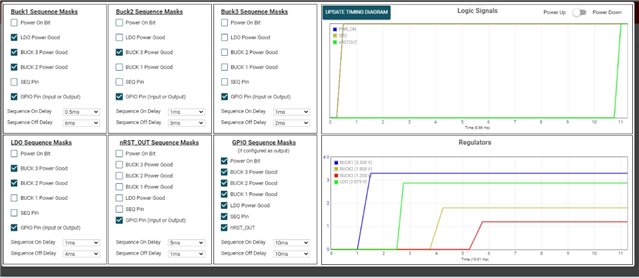Other Parts Discussed in Thread: USB2ANY
Hello There,
I want to used the tool program PMIC, but failed with error info: connected to USB2ANY Controller, but failed to connect to device TPS65033x on I2C @0x60
my question is :
- I am using IC TPS65033104, my colleague told me that this chip can't be program as we need to use PTPS65033 version, is that true? I have a hint that the chip I am using can measure the output voltage even I can't find it through I2C bus, buck1 is 3V3, buck2 is 1V8, Buck3 is 1V2, LDO is 2V8.
- if the question above is not true, how can I solve the problem? for example, the jumper checking?



